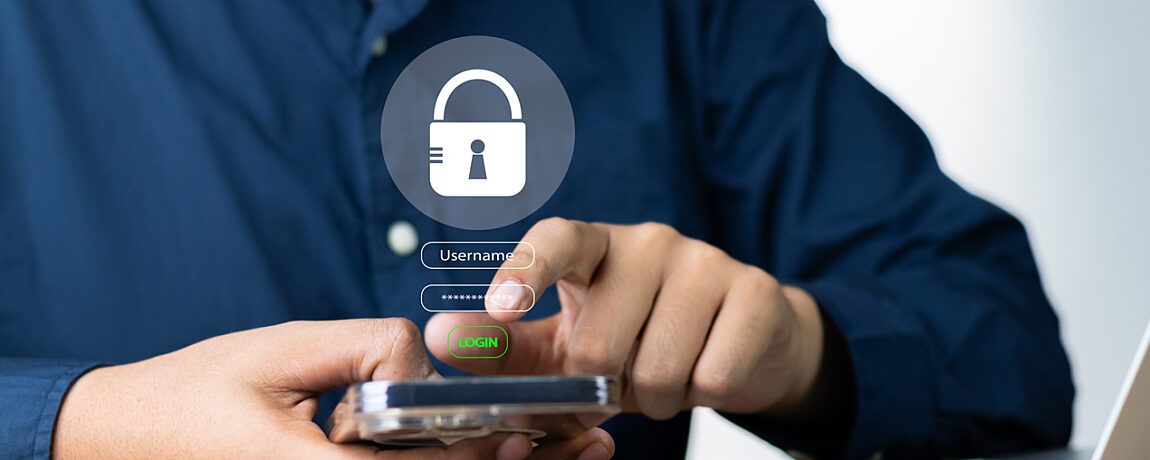Authentication is a critical element of security in the digital ecosystem. While it blocks as much as 99.9% of modern automated attacks, not all organizations use it, and it remains a mystery to most. Keep reading to learn more about multi-factor authentication and how you can leverage it to bolster your online security.
Best Web Authentication Practices
In today’s digital landscape, web authentication methods are pivotal in securing our online presence. In this regard, passwords have long been the gold standard. However, biometrics and tokens are gaining prominence, each with strengths and weaknesses.
Biometrics, like fingerprint and facial recognition, offer a high level of security by using unique physical characteristics. On the other hand, tokens, such as smart cards or mobile apps, provide an additional layer of defense.
While passwords remain common, they are susceptible to breaches if not managed properly.
Authentication Methods for Web Applications in Cybersecurity
With web applications, having robust security is essential. As you know, achieving this requires tailored authentication strategies.
Methods like Single Sign-On (SSO) simplify user access but must be combined with authentication factors to ensure comprehensive protection. When combined with biometric authentication, SSO offers a strong defense against unauthorized access.
Which Two Methods of Authentication Does Web Server Authentication Support?
Web server authentication typically supports two primary methods: Basic Authentication and Digest Authentication. Basic Authentication transmits credentials as plain text, while Digest Authentication hashes the credentials before sending them, offering a higher level of security.
Types of Authentication in Network Security
Network security relies on various authentication methods, including:
-
Password-based Authentication: Most familiar but susceptible to attacks.
-
Biometric Authentication: Utilizes unique physical traits for verification.
-
Token-based Authentication: Requires a physical or digital token for access.
-
Multi-Factor Authentication (MFA): Combines multiple authentication factors for added security.
Distinguishing Between Authentication and Authorization
Although authentication and authorization are closely related, they’re distinct concepts. Authentication confirms identity, while authorization determines what actions a user can perform once authenticated. However, they work in tandem to safeguard data and resources.
Four Types of Authentication in Security
There are several types of authentication methods in security, including Single-Factor Authentication (SFA), Two-Factor Authentication (2FA), Multi-Factor Authentication (MFA), and Risk-Based Authentication. Each level adds more layers of security, with MFA providing the most robust protection.
Five Types of Authentication in Cybersecurity
In cybersecurity, the arsenal expands to include additional layers of security. In addition to SFA, 2FA, and MFA, you’ll encounter Risk-Based Authentication and Adaptive Authentication, which adapt to the context of the login attempt, adding a crucial layer of security.
Authentication Examples and Concepts
When it comes to authentication, you’ll often find yourself using ‘something you have’ to confirm your identity. Such things include smart cards and mobile apps like Google Authenticator, which add a layer of security because an attacker would need to possess them to gain access.
Authentication Type: PAP or CHAP
PAP (Password Authentication Protocol) and CHAP (Challenge Handshake Authentication Protocol) are two distinct authentication methods. PAP sends passwords in plaintext, while CHAP uses a challenge-response mechanism, making it more secure.
What Is Credential Stuffing?
Credential stuffing is a cyberattack method where hackers use stolen usernames and passwords from one service to gain unauthorized access to other accounts. It underscores the importance of strong, unique passwords and the need for additional authentication factors.
Learn more about the importance of MFA in cybersecurity in the clip below.
Authentication Tools
Authentication tools like Duo Security and Okta help organizations bolster their security. These tools offer various authentication methods, including MFA, to ensure that only authorized users access sensitive systems.
User Authentication Services
User authentication services like LDAP (Lightweight Directory Access Protocol) and Active Directory manage user identities and access. They are vital components of identity and access management, ensuring secure user authentication and authorization.
Authentication Software Vendors
Software vendors like Okta, Ping Identity, and OneLogin provide authentication solutions for businesses. These tools offer a range of features, including SSO, MFA, and identity management.
Authentication Factors
Authentication relies on three factors: knowledge, possession, and inherence. In various combinations, these factors contribute to multi-factor authentication (MFA), ensuring a higher level of security.
Authentication Mechanisms
Authentication mechanisms include one-time passwords and biometrics. They add layers of security by confirming identity through what you know (knowledge), what you have (possession), and what you are (inherence).
Google Authenticator
Google Authenticator is a widely used mobile app that generates one-time passwords for two-factor authentication (2FA). It enhances account security by requiring something users have—their mobile device.
Multi-Factor Authentication Solutions
Multi-factor authentication (MFA) solutions are a cornerstone of modern security. They require users to provide multiple forms of authentication to access accounts, adding robust protection against unauthorized access.
How to Pronounce Authentication
If you’re not sure how to pronounce authentication, don’t worry you’re not alone. Here’s a simplified way of doing it: aa-then-tuh-kay-shn. See, it’s not so hard after all.
Be Proactive
Authentication is a multifaceted and evolving field with many methods and tools. Staying informed about these concepts and tools is essential to maintaining a secure digital presence.
Whether implementing MFA solutions, exploring new authentication tools, or simply fine-tuning your pronunciation, every step towards strengthening your online security is a step in the right direction.


